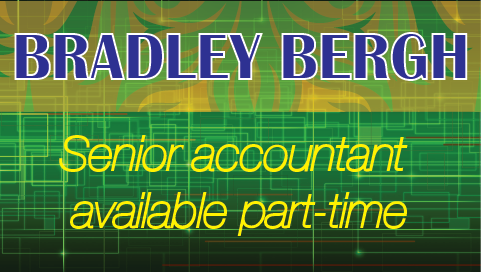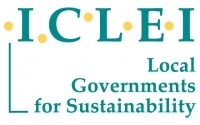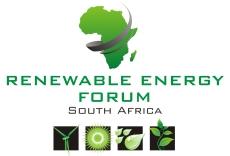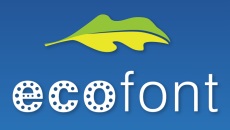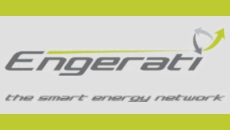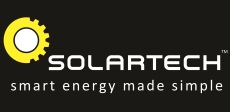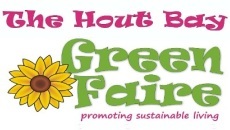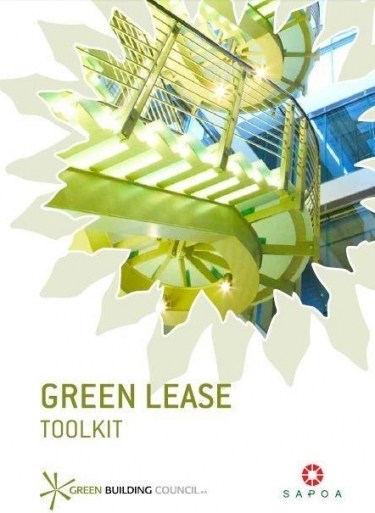In an exciting development, the Green Building Council of South Africa (GBCSA) announced that the Green Lease Toolkit, which they co-developed with the South African Property Owners’ Association (SAPOA), was officially launched at the 44th SAPOA International Convention & Property Exhibition, in Durban on the 30th of May 2012.
unpacking the shared benefits of going green
‘Green Lease’ is a term that describes both a negotiating process, between landlords and tenants, and the documented agreement for the adoption and implementation of green building initiatives. A green lease is a vehicle for both landlords and tenants to unpack the shared benefits of “going green,” while defining contractual rights and obligations that require or encourage the implementation of green building initiatives.
combining market need and demand
The Green Lease Toolkit was developed from a shared basis of both market need and market demand. South African landlords have consistently requested guidance and resources, to help them harness the benefits of well-designed, well-built (and crucially, well-operated) buildings. Similarly, South African tenants are increasingly demanding “green” space, in a bid to take advantage of the healthier and more productive indoor environments that green buildings offer.
“We are happy to have played a role in bringing a practical mechanism to the South African industry which begins to satisfy these needs. With buildings providing up to 40% of greenhouse gas abatement potential, it is imperative that we synchronise the design and construction of new buildings, with the efficient and responsible operation of both these buildings and our existing building supply,” comments Neil Gopal, CEO of SAPOA.
ensuring a building operates in sustainable way
A growing interest in sustainable development in South Africa is motivating developers to procure more green buildings, which boast superior asset performance whilst addressing a range of environmentally responsible initiatives. Green Leases, which set out the shared responsibilities of landlords and tenants, provide a platform for sharing the benefits of the enhanced performance of the building and balancing the respective costs between each party. A Green Lease ensures that a sustainably designed and built building - is operated in a sustainable way.
According to Brian Wilkinson, CEO of the Green Building Council of South Africa, “as the green building movement in South Africa gains traction, we are seeing a more consistent adoption of green building principles by leaders in the local property industry. However, in order to truly yield maximum and longer-term benefits, buildings have to be managed and operated in an environmentally sustainable and resource efficient way. The Green Lease Toolkit is a precursor to shifting the paradigm of ‘living green’ into the mainstream for owners and tenants alike.”
benefits of a green lease
If we are to see a reduction in South Africa’s carbon footprint, it is imperative that the building performance of both existing and new buildings is improved. The principal benefit of a green lease is in the ownership and/or occupation of an operationally efficient and sustainable building, that minimises our negative impact on our environment and our planet’s resources.
Other benefits include improved quality of life, increased staff retention and productivity, improved asset performance, reduced exposure to regulatory changes, reduced operating costs, reputational enhancement and compliance with more stringent corporate reporting requirements.
Some of these benefits will accrue to tenants, while others will accrue to landlords and some will be shared. However, all are interdependent and rely on the intent and action of both parties, their agents, contractors and employees – for their shared benefit. The Green Lease Toolkit unpacks this delicate balance and introduces the concept of ‘spilt-incentives’ between owners and tenants.
the 101 of green leases
“The Green Lease Toolkit is useful and relevant to the property industry in preparing lease documents that take both green building design and operational principles into account. It also uses robust methodologies established through market analysis and is applicable across all building sectors,” says Jarrod Lewin, project manager on the toolkit at the GBCSA.
“The Toolkit doesn’t only provide the basic guidelines, but is also a practical resource which includes schedules and checklists that are transferable into lease documents. The aim of the Toolkit is to make green leases more accessible to tenants, building owners, building managers and their representatives,” continues Lewin.
new concept in South Africa
As experienced in the United Kingdom, the introduction of green leases tends to stimulate healthy debate, predominantly around the allocation of costs for environmental improvements. The Green Lease Toolkit addresses the motivational drivers for change, from both perspectives, and underlines the need for a collaborative approach to find the sweet-spot in yielding mutual and equitable benefits. The ultimate aim being - to encourage and motivate for the widespread introduction of green leases.
“The GBCSA and SAPOA acknowledge everyone who worked on and supported the development of the Green Lease Toolkit, to bring it to the South African market. We would specifically like to thank all the individuals and organisations who provided their expertise and feedback in the development of the Toolkit through the GBCSA’s Voluntary Committee, as well as the consultant (WSP Green by Design) and the legal reviewers (Old Mutual),” concludes Wilkinson.
The Green Lease Toolkit is available to all GBCSA and SAPOA members free of charge (limited supply of hard copies only or downloadable PDF on www.gbcsa.org.za / www.sapoa.org.za ). Non-members will be charged a fee to access the downloadable PDF online.


